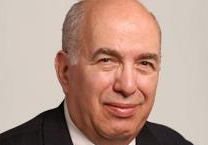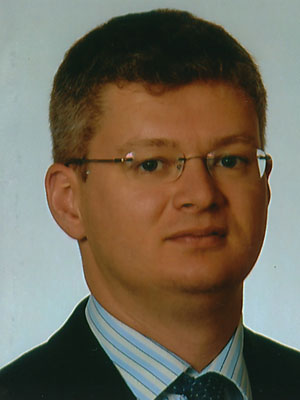Rating Your Investments: What Makes a Gold Medal Mutual Fund Stand Apart?

In 2011, Morningstar introduced a rating system in the United States that is intended to supplement the star methodology, which is based solely on risk and return. This additional rating offers guidance to investors about the likely future investment performance of mutual funds. Morningstar’s approach looks at people, process, performance, parent, and price and awards gold, silver, and bronze medals to its preferred funds.
Medals are awarded in 71 investment categories. In this post, as one example, we’ll look at the characteristics of the gold medal–winning mid-cap growth funds — in particular, what these funds have in common and what appears to merit Morningstar’s recognition. Although it’s premature to determine whether this method is effective at predicting future winners, it is interesting to see how Morningstar goes about identifying the best.
Here are the five funds awarded gold medals in the mid-cap growth category:
- Morgan Stanley Institutional Mid Cap Growth I (MPEGX)
- PRIMECAP Odyssey Aggressive Growth (POAGX)
- Royce Premier Investment (RYPRX)
- T. Rowe Price Mid-Cap Growth (RPMGX)
- Westport R (WPFRX)
Morningstar indicates a clear preference for portfolio managers who are very experienced
- in the business,
- with the specific fund, and
- on the team if multiple portfolio managers are involved with the fund.
The only problem that I see with this preference for long experience is that it may raise issues about succession planning. In fact, there were comments made by the fund analysts about the ages of some of the portfolio managers on these funds, but age of the portfolio managers did not reduce any of the funds’ ratings.
If other analysts or portfolio managers in the firm contribute to the fund’s investment process, Morningstar prefers stability (i.e., low people turnover). Morningstar also strongly prefers funds that have portfolio managers who hold significant investments in their own funds, which is considered an indication of the managers’ alignment with shareholder interests — $1 million invested per portfolio manager appears to be a frequently cited number by Morningstar.
Morningstar does not have a specific preference for investment processes that meet its approval, but fund analysts noted a number of common characteristics across the five funds:
- Low portfolio turnover (average annual value of purchases and sales as a percentage of the total value of the fund) is a common characteristic across all of the top-rated funds. Three of the five funds have portfolio turnover at or below 10%, and the other two are under 30%.
- If unusual risk is present in the form of illiquid positions, very small-cap stocks, or heavy concentrations in just a few industry sectors, some mitigating factor is also present (e.g., smaller individual security holdings that moderate overall risk).
- All of the managers have portfolios with significant deviations from the index and sometimes even from the mid-cap category completely — for example, industry sectors are often heavily overweighted or underweighted. Several managers also have significant exposure to stocks that are entirely outside of the mid-cap category — either larger or smaller cap.
- All of the funds have an average — or, more often, a below average — number of stocks.
- The fund managers often have an attribute that endears them to the Morningstar fund analyst. For example, the manager may have a particular functional expertise (e.g., engineering) that enhances the manager’s capability in the eyes of the Morningstar analyst. It is hard to know whether these attributes really make any difference in investment results, but they do enhance the story.
- Even within the growth style category, the Morningstar analysts appear to prefer portfolio managers who overlay value principles (i.e., price considerations) on their stock selection process.
As you might expect, all of the gold medal funds have had exceptionally strong historical performance over an extended period.
Another, perhaps unexpected, characteristic of these top-rated funds is that their results are frequently more volatile than those of the average fund, which arises from their large differences in sector, industry, and stock weights compared with the index. This higher volatility does not appear to penalize the overall fund rating. This indifference to volatility by Morningstar is surprising because the reality is that most people find it difficult to live through periods of downside volatility, even if the long-term record of performance is strong.
The strength of the investment culture of the fund family’s parent company is an important part of the evaluation. Firm leadership that is stable is preferred, and new-product introductions are OK within limits. But Morningstar shies away from firms that regularly launch trendy new products and looks favorably on firms that close funds to new investors if the funds have been growing too quickly. Morningstar tends to prefer firms that favor existing fund owners over new investors.
Morningstar applauds fees that are below the category average. However, a neutral or negative rating on price for three of the five funds that have fees at or above the category average did not prevent the funds from being awarded an overall gold medal. Bottom line: Price is not a big issue. When choosing an active manager, most investors are less sensitive to fees, within reason, than to other attributes.
Morningstar’s efforts to identify likely top-performing managers provide some useful ideas for investors to consider in their own due diligence efforts:
- Management teams should be stable and have a demonstrated commitment to their own product.
- A fund should have low portfolio turnover and an investment process that clearly distinguishes the manager from a passively managed index.
- Volatility in performance is acceptable, but investors should be compensated with much higher returns for accepting the additional risk.
- The parent firm should have a history of stability and favor a cautious approach in opening trendy new funds.
If you liked this post, don’t forget to subscribe to Inside Investing via Email or RSS.
Please note that the content of this site should not be construed as investment advice, nor do the opinions expressed necessarily reflect the views of CFA Institute.
Photo credit: iStockphoti/exxorian


